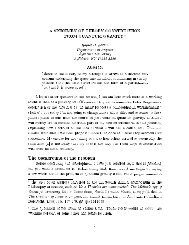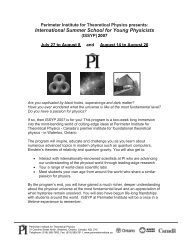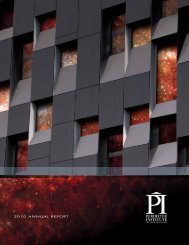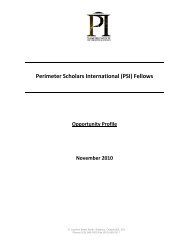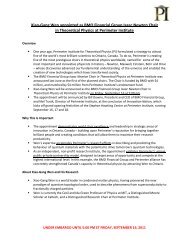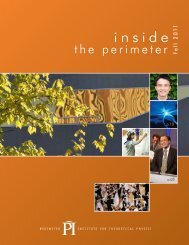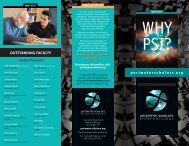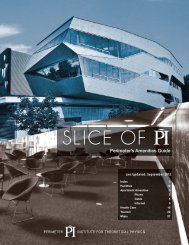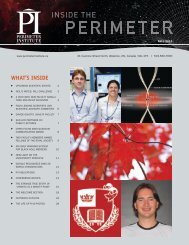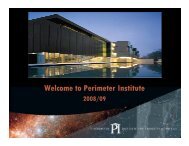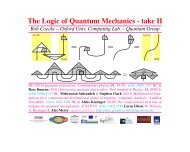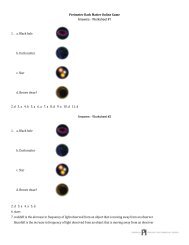Dark Matter Teacher Guide - Perimeter Institute
Dark Matter Teacher Guide - Perimeter Institute
Dark Matter Teacher Guide - Perimeter Institute
You also want an ePaper? Increase the reach of your titles
YUMPU automatically turns print PDFs into web optimized ePapers that Google loves.
Figure 21 If dark matter is made of WIMPs or axions, then billions of<br />
dark matter particles are passing through your body each second.<br />
PICASSO <strong>Dark</strong> <strong>Matter</strong> Experiment<br />
One of the experiments at SNOLAB is the PICASSO<br />
(Project in Canada to Search for Supersymmetic Objects)<br />
experiment (Figure 22), which is highlighted in the video.<br />
It consists of millions of tiny droplets of superheated<br />
liquid Freon (C 4 F 10 ) suspended in a gel. There is a very<br />
small chance that a WIMP passing through the experiment<br />
will collide with a fluorine nucleus within one of the<br />
droplets. When this happens, energy is transferred to the<br />
droplet, causing the liquid to vapourize and a tiny bubble<br />
to form. The bubble then rapidly expands, sending out a<br />
shock wave that physicists detect using acoustic sensors.<br />
ICE CUBE <strong>Dark</strong> <strong>Matter</strong> Experiment<br />
Another dark matter experiment is located at the South<br />
Pole. The ICECUBE experiment consists of a vast array<br />
of sensitive light detectors located in 1 km deep holes<br />
in the ice. If dark matter is made of WIMPs, then dark<br />
matter that is gravitationally trapped within the Sun and<br />
Earth should, indirectly, cause light to hit the detectors in a<br />
distinctive pattern.<br />
CERN and the LHC<br />
Yet another experiment that might detect dark matter is<br />
taking place just outside Geneva, Switzerland at CERN, the<br />
world’s largest particle accelerator (Figure 23). Using the<br />
Large Hadron Collider (LHC), physicists hope to actually<br />
create dark matter particles (WIMPs) via extremely highenergy<br />
collisions between subatomic particles. If they<br />
succeed, this will provide evidence for the WIMP theory<br />
of dark matter.<br />
Modifying Newton<br />
A small minority of physicists advocate a radical solution<br />
to the mystery of dark matter: modifying Newton’s theory<br />
of universal gravitation on the scale of a galaxy (or larger).<br />
One theory is called Modified Newtonian Dynamics<br />
(MOND) and it can explain the mass discrepancy between<br />
the Orbital and Brightness Methods. MOND does this<br />
by altering the relationship between the magnitude of the<br />
gravitational force F and distance r from<br />
to<br />
for very large distances.<br />
Although MOND can explain the evidence supporting the<br />
existence of dark matter within galaxies, it cannot explain<br />
the evidence for it from gravitational lensing. In addition,<br />
changing a basic physical law is a very rare occurrence in<br />
physics and most physicists do not believe that this is the<br />
solution to the mystery of dark matter.<br />
Conclusion<br />
The race to be the first to detect dark matter here on Earth<br />
is intense. Whoever succeeds first will, for the first time<br />
ever, have directly observed the particle that makes up, on<br />
average, 90% of the mass of every galaxy in the universe.<br />
They are almost certain to win a Nobel Prize.<br />
Figure 22 PICASSO dark matter experiment in Ontario, Canada.<br />
35



